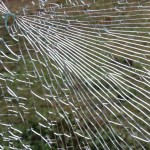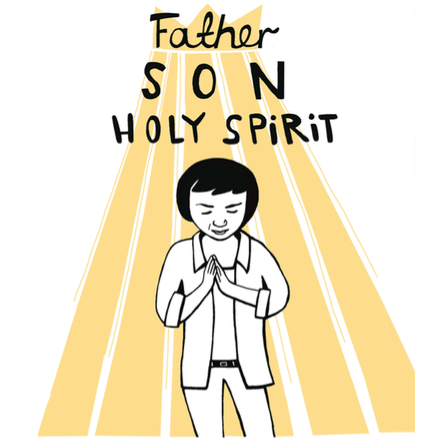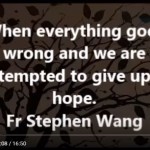Ida: beauty in black and white
[Warning: minor plot-spoilers in my text; but major plot-spoilers in the trailer above!]
If the Polish film Ida does not win an Oscar for best cinematography at next year’s awards then I will eat my clerical collar. I wanted to pause every frame and slow-motion every scene just to hold the images and the compositions.
They used an old-fashioned screen ratio. It was almost felt square (1:1 – but of course it wasn’t), and the heads of the protagonists were often held in the lower third of the screen (quite ‘wrong’ in terms of classical framing), creating this peculiar sense of distortion and space – a sky or curtain or tree extending far higher that it should – without any loss of harmony.
It was breathtaking. I caught myself literally holding my breath, as if to listen and see with a deeper stillness, almost afraid of ‘disturbing’ the moment. It took me back to Tarkovsky’s Andrei Rublev; the same clarity of image, the same sense of mythical story despite the time-specific events.
Set in Poland in 1962, it’s about a young nun who takes some time out of the convent just before her vows in order to resolve some family issues. I wanted to ‘read’ the film as a realist drama, about a young woman’s religious crisis, her quest to understand her past – her very identity, and her confrontation with modernity in the form of a carefree jazz musician. It nearly worked, and even in the final scene I was imagining what this journey meant for her as a person, as a character.
But in the end it became impossible not to see the whole film as a fable – and this both weakened and enriched it. The characters were too symbolic to have enough psychological depth: the innocent nun, the judge, the farmer with a secret past, the saxophonist, the singer. Some of the scenes would be dismissed as cinematic cliché if they were taken too literally. The de rigueur removing of the religious veil and exposing the hair for the first time was as predictable as it was beautiful, and had none of the psychological and religious transgression that accompanied Deborah Kerr when she picked up that stick of red lipstick in the Himalayan convent in Black Narcissus.
But what a fable! Ida/Poland: a religious country (in 1962 and perhaps still in 2014), stepping out of the convent, trying to confront it’s ambiguous past, attracted by the seductions of modernity (in the form of John Coltrane), not quite sure where its future should lead. Ida/Poland: who embraces everything the post-war/post-convent/post-communism world has to offer, and then asks the question – so beautifully put in the film – “and what then?” Ida/Poland: who wants to leave and find liberation but wonders if there is perhaps something of value, something deeper, in the place she has come from – her culture, her traditions, her Catholic faith.
Catch it while you still can.

















The lighting in the film was breathtaking ~ stark & poignantly beautiful ~ chilling and warming at once!
I hadn’t heard of it, but I see it’s available to rent on iTunes Australia (not the UK site). It would probably be better on a big screen, but I’ll take a look. I saw The Judge and Gone Girl this week, both were excellent.
Thank you for recommending this beautiful film. I have just been to see it. Just one jarring moment – I spotted a ‘table’ altar in front of the main altar in the church. I don’t remember seeing these in the early sixties. Apart from that the era was well captured with headscarves and music of the day.
Well spotted! Although is it possible that some churches were experimenting with forward altars in Poland in 1962?!